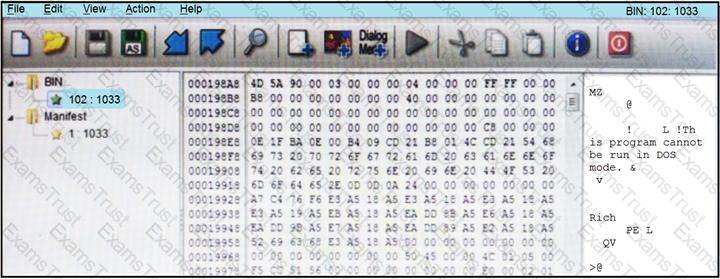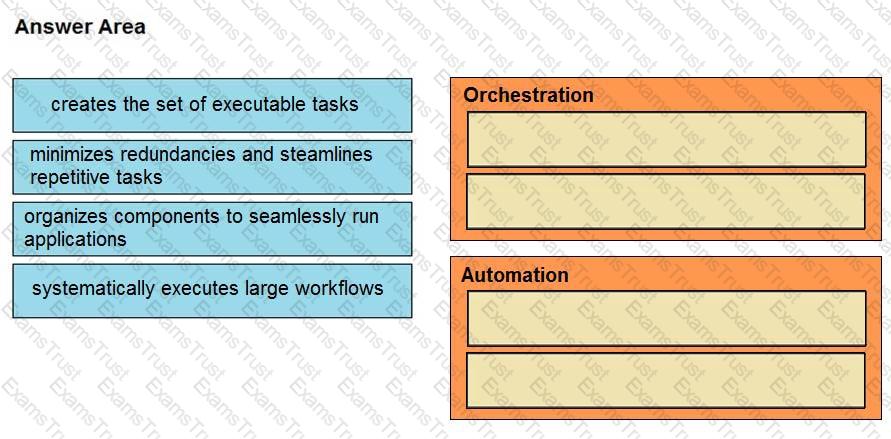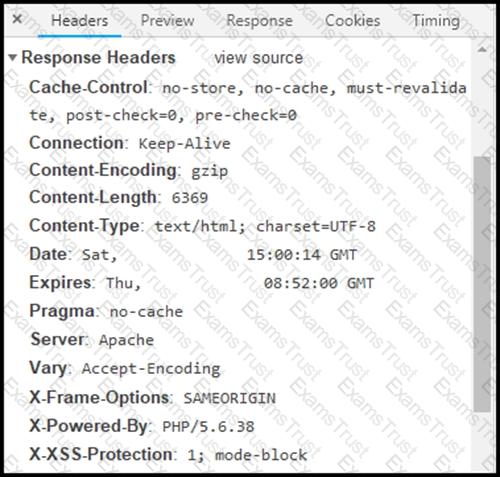A security architect is working in a processing center and must implement a DLP solution to detect and prevent any type of copy and paste attempts of sensitive data within unapproved applications and removable devices. Which technical architecture must be used?
A logistic company must use an outdated application located in a private VLAN during the migration to new technologies. The IPS blocked and reported an unencrypted communication. Which tuning option should be applied to IPS?
A security expert is investigating a breach that resulted in a $32 million loss from customer accounts. Hackers were able to steal API keys and two-factor codes due to a vulnerability that was introduced in a new code a few weeks before the attack. Which step was missed that would have prevented this breach?
A new malware variant is discovered hidden in pirated software that is distributed on the Internet. Executives have asked for an organizational risk assessment. The security officer is given a list of all assets. According to NIST, which two elements are missing to calculate the risk assessment? (Choose two.)
An engineer receives a report that indicates a possible incident of a malicious insider sending company information to outside parties. What is the first action the engineer must take to determine whether an incident has occurred?
A threat actor attacked an organization’s Active Directory server from a remote location, and in a thirty-minute timeframe, stole the password for the administrator account and attempted to access 3 company servers. The threat actor successfully accessed the first server that contained sales data, but no files were downloaded. A second server was also accessed that contained marketing information and 11 files were downloaded. When the threat actor accessed the third server that contained corporate financial data, the session was disconnected, and the administrator’s account was disabled. Which activity triggered the behavior analytics tool?
A European-based advertisement company collects tracking information from partner websites and stores it on a local server to provide tailored ads. Which standard must the company follow to safeguard the resting data?
According to GDPR, what should be done with data to ensure its confidentiality, integrity, and availability?
Refer to the exhibit.

An engineer is reverse engineering a suspicious file by examining its resources. What does this file indicate?
What is the difference between process orchestration and automation?
A SOC analyst detected a ransomware outbreak in the organization coming from a malicious email attachment. Affected parties are notified, and the incident response team is assigned to the case. According to the NIST incident response handbook, what is the next step in handling the incident?
Drag and drop the function on the left onto the mechanism on the right.

An engineer has created a bash script to automate a complicated process. During script execution, this error occurs: permission denied. Which command must be added to execute this script?
A company recently completed an internal audit and discovered that there is CSRF vulnerability in 20 of its hosted applications. Based on the audit, which recommendation should an engineer make for patching?
A SOC engineer discovers that the organization had three DDOS attacks overnight. Four servers are reported offline, even though the hardware seems to be working as expected. One of the offline servers is affecting the pay system reporting times. Three employees, including executive management, have reported ransomware on their laptops. Which steps help the engineer understand a comprehensive overview of the incident?
A SOC analyst is notified by the network monitoring tool that there are unusual types of internal traffic on IP subnet 103.861.2117.0/24. The analyst discovers unexplained encrypted data files on a computer system that belongs on that specific subnet. What is the cause of the issue?
Refer to the exhibit.

Where are the browser page rendering permissions displayed?